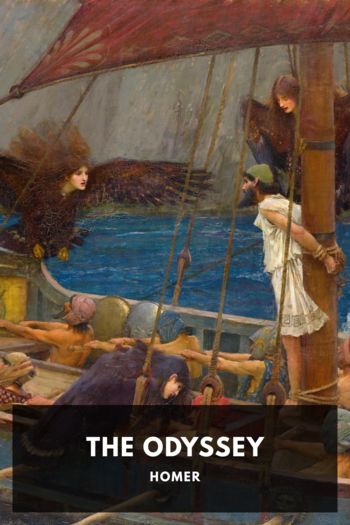The Saboteurs, Clive Cussler [dark academia books to read .txt] 📗

- Author: Clive Cussler
Book online «The Saboteurs, Clive Cussler [dark academia books to read .txt] 📗». Author Clive Cussler
“How high above sea level will the locks raise the ships?”
“Lake Gatun, and the rest of the canal, will be eighty-five feet above the oceans, so each individual lock chamber raises or lowers a ship about thirty feet.”
“And all the water comes from the Chagres River?”
“Yes. It was the reason this isn’t a sea level canal like the Suez, which the French originally wanted to build. They arrived in Panama and just started digging at the continental divide with no real plan on how to control the Chagres at full flood. Truth be told, when we first started, we wanted a sea level canal too yet soon realized it was impossible. The Chagres during the rainy season is a beast we simply can’t tame.
“Once we’d properly surveyed the possible routes, it was clear we needed locks. I can’t imagine the precision it took to set everything at the right elevations across a fifty-mile canal, but that’s exactly what they’ve done. And here’s a kicker—because of ocean currents, the Pacific Ocean is a foot higher than the Atlantic and has twenty-foot tides compared to three-footers over in Colón.”
“There were so many challenges to overcome,” Court Talbot said, “that I had my doubts it would ever happen.”
Westbrook nodded. “A lot of people felt that way at first, but John Stevens, the chief engineer before Colonel Goethals, knew what he was doing. He was a railwayman, like me, and had overseen the laying of more than a thousand miles of track in some of the worst conditions America’s Northwest could throw at him.”
With a blast from its whistle and the clang of couplings stretching out, the train pulled from the station. It was only a short distance to the next construction site on the canal, the Pedro Miguel Locks.
Here, Bell got a better view of the monumental scale of what was being accomplished in the Panamanian jungle. The site stretched for more than a hundred acres. Just clearing that much jungle alone was an enormous undertaking. Then it all had been dug down so that the foundations would be below the canal’s eventual bed. And then they built perhaps the largest man-made structure ever conceived.
The concrete walls of each lock chamber were fifty-five feet thick at the base with eighteen-foot-diameter culverts running through them so water from above the locks could be allowed into the structure from below. In this fashion, the boat in the lock wouldn’t be buffeted by the force of the water. The lock walls stood eighty feet tall and stretched for a thousand feet. The steel doors were among the largest on the planet, though they were hollow and watertight so their buoyancy meant they could be opened and closed with only a single electric motor.
Each of the two side-by-side chambers were a hundred and ten feet wide, wide enough to accommodate whatever next-generation battleships the Navy built. The outside walls of the chambers were stepped back like the sides of a modern-day ziggurat and would eventually be buried with backfill up to the top, which then would have special train tracks installed on them so electric locomotives, called mules, would maneuver ships through the lock using tow ropes.
All around the site, thousands of men still toiled as if in the shadow of a great cathedral under construction. Four towering cranes built on metal scaffolding and running on rails laid outside the locks carried buckets of cement from a nearby dedicated plant. Welders were at work amid fountains of sparks that cascaded down the lock like fiery waterfalls.
Dwarfed by the massive concrete and steel colossus, the workers looked like ants. But the sound of their endeavors was a throbbing din of train whistles, droning rock crushers, the pounding of rivets with pneumatic hammers, and the shouts of men. Trucks swooped around the site on gravel roads to prevent them from sinking into the mud quagmire of so much overturned earth and rainwater.
As Bell, Talbot, and Sam Westbrook stepped from the train onto the platform, one of the cranes trundled along the length of the lock, an enormous bucket of cement dangling from its two-inch-thick cable. It was lowered to where workers stood ready at some newly built forms. Once it was centered, a lock at the bucket’s base was struck with a shovel and the bottom dropped out. The lock wall was too tall for Bell to see, but he imagined the concrete sloshing into the form and completing a few more cubic yards of the structure.
Adjacent to the lock was a small town’s worth of buildings. They weren’t where the workers lived, that was farther from the site. These were the warehouses, machine shops, and other support structures. A distance away, and linked by temporary rail, was the cement plant, where mounds of rock and sand were delivered hourly by train. The special cars laden with concrete buckets destined for the cranes came out the other end of the plant.
“This level of coordination boggles the mind,” Bell said in awe.
Sam nodded. “If just one moving part in the chain doesn’t work, like we miss delivering a load of portland cement, then the whole thing grinds to a halt. Come on, the warehouse that was robbed is this way.”
10
Westbrook led them across the busy construction yard, pausing once to let a five-car train carrying gravel from the rock crusher to the cement plant pass by.
“What kind of security do you have here?” Bell asked as they entered a warren of massive warehouses.
“Night patrols, and even though we’ve stepped up the numbers since Viboras Rojas appeared, as you can tell this place is enormous. We mainly rely on our isolation here. There’s only one road in or out, plus the railroad, and the zone extends five miles into the jungle. We actually employ very few Panamanians.”
They passed the last of the warehouses and came to a brick-fronted





Comments (0)